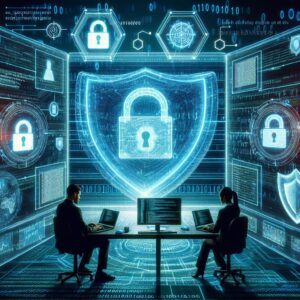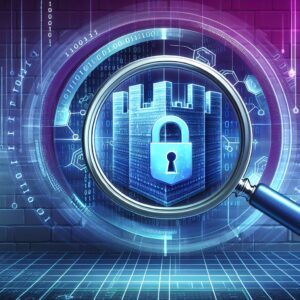As technology continues to advance and more of our lives move online, the importance of cyber security has never been greater. With cyber attacks becoming more prevalent and sophisticated, organizations and individuals need to be diligent in protecting their digital assets. One crucial aspect of cyber security is computer forensics, the practice of collecting, analyzing, and preserving digital evidence to investigate and prevent cyber crimes. In this blog post, we’ll explore the importance of computer forensics in ensuring cyber security.
Introduction to Computer Forensics
Computer forensics involves the use of specialized tools and techniques to retrieve and analyze data from digital devices such as computers, mobile phones, and servers. This data can then be used to investigate security incidents, recover lost or deleted information, and gather evidence for legal proceedings. By examining digital artifacts such as emails, files, and network activity logs, computer forensics experts can uncover the who, what, when, and how of a cyber attack, helping organizations to understand the full scope of the incident and take appropriate action to mitigate future risks.
The Role of Computer Forensics in Cyber Security
Computer forensics plays a crucial role in maintaining cyber security by providing organizations with the tools and insights they need to detect and respond to security incidents. By analyzing digital evidence, computer forensics experts can identify vulnerabilities in a system, trace the source of an attack, and determine the extent of the damage. This information is vital for organizations to patch security holes, improve their defenses, and prevent future breaches.
In addition to incident response, computer forensics can also be used for proactive measures such as risk assessment and compliance auditing. By conducting regular forensic examinations of their systems, organizations can identify potential security risks before they are exploited by cyber criminals. This proactive approach can help organizations to stay one step ahead of cyber threats and protect their sensitive data from unauthorized access.
Best Practices for Computer Forensics
To ensure the effectiveness of computer forensics in supporting cyber security efforts, organizations should follow best practices when collecting and analyzing digital evidence. These practices include:
-
Preserving Evidence: It is crucial to preserve the integrity of digital evidence by using forensically sound methods to collect, handle, and store data. This includes creating a forensic image of the original device and maintaining a chain of custody to track the handling of evidence.
-
Analyzing Data: Computer forensics experts should use specialized tools and techniques to analyze digital artifacts and reconstruct events leading up to a security incident. This may involve examining file timestamps, network logs, and system activity to identify the tactics used by cyber attackers.
-
Documenting Findings: It is important to document the findings of a computer forensics investigation in a clear and concise manner. This documentation can be used as evidence in legal proceedings and as a reference for future incident response efforts.
By following these best practices, organizations can leverage the power of computer forensics to strengthen their cyber security defenses and protect their digital assets from cyber threats.
Conclusion
In an increasingly connected world, cyber security is a top priority for organizations of all sizes. By incorporating computer forensics into their security strategy, organizations can improve their ability to detect, respond to, and prevent cyber attacks. By following best practices for collecting and analyzing digital evidence, organizations can leverage the power of computer forensics to strengthen their cyber security defenses and protect their sensitive data from unauthorized access.
In conclusion, computer forensics is a valuable tool for ensuring cyber security in today’s digital landscape. By investing in the skills and tools needed to conduct effective forensic investigations, organizations can better protect their digital assets and safeguard against cyber threats. With the right approach to computer forensics, organizations can stay one step ahead of cyber criminals and defend against the ever-evolving landscape of cyber attacks.




